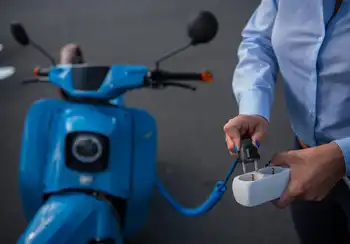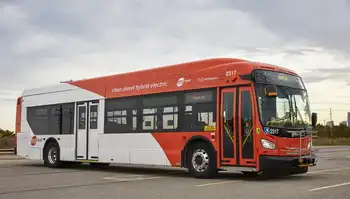Salina competes against other cities to cut energy
"It seemed like a great business to be in because everybody needs a light bulb," he said. "And I'm still working."
Stoneback, who is based in Lawrence, is energy solutions manager for Western Extralite, an electrical and voice/data products store that recently opened its 17th location at 1320 Armory. He conducts energy audits for industrial and commercial clients to determine how much the monthly energy bill could be cut if they installed more efficient lighting systems.
"The technology's there, and it works," he said. "It just takes people awhile to get their arms around it."
Steve Boling, operations manager for Western Extralite's Salina store, and his six-person staff can also discuss ways to improve lighting efficiency with business or homeowners who want to reduce their energy use and give Salina an edge in the "Take Charge!" challenge.
In the yearlong contest launched in April, Salina residents are competing against five other Kansas cities to see which community can cut electricity use the most.
While the environmental benefits are enough to motivate some users to reduce electrical consumption, others are more convinced by the money that can be saved by replacing inefficient incandescent bulbs and large fluorescent tubes with more efficient, more compact fluorescent bulbs or, in some applications, LED lighting.
Stoneback assists business customers in applying for tax incentives and utility rebates and structuring purchasing plans or lease agreements that make it possible to improve lighting systems without a big cash outlay. His initial project assessment, in which he walks through a business and estimates the rate of return that could be expected, is free.
According to 2003 U.S. Energy Information Administration statistics, lighting accounts for 20 percent of the overall energy usage in commercial buildings, second only to heating at 38 percent. More electricity is consumed for lighting than any other use. On average, 38 percent of a commercial business' electricity bill pays for lighting, more than the combined electricity for air conditioning, which accounts for 13 percent and heating at 4 percent.
Office buildings consume more than twice as much electricity for lighting as warehouses, hotels, schools, retail stores and hospitals, the next biggest users of electric light, according to 2003 EIA data.
Decreasing the cost of lighting can have a significant impact on a business' operating expenses, Stoneback said.
"These days, companies are looking for improved cash flow, and we can help them achieve that," Boling said.
People who want to see how new lighting options work can see for themselves at the Western Extralite store, where the warehouse is lit by smaller, more efficient fluorescent tube lights on sensors that automatically turn the lights on only when someone is in the area. The even more efficient LED lights, which manufacturers say will last 30 years, are used in outdoor wall packs installed on the building and in strips of mini lights that brighten a space under a classroom cabinet.
"We took this old building that hadn't been used in years and tried to make it as energy efficient as we could," Boling said. "We went to great lengths to try and accomplish that."
Stoneback said for most room lighting applications, LED lights are not yet of a consistent color quality or a low enough price to make a good return on the investment possible.
"Six months from now, I may be saying something different, but the fluorescent lights have a good return now," he said.
Stoneback said the occupancy controlled sensor is the least expensive energy-saving product on the market and the most effective.
"Sensors are something people don't tend to think about," he said.
Sensors can be set to trigger lights to come on at half power and require a switch be flipped to bring them up to full bright, he said. A typical office light fixture currently runs on 123 watts of power, but smaller tubes now available can produce the same amount of light at 50 watts, or run half-power on 30 watts, he said.
The standard fluorescent tube, called a T-12 or fat lamp, typically used in manufacturing and commercial buildings runs on 458 watts per fixture and is slow to come to full-bright, Stoneback said. The more slender T-8 tubes, which first became available about four years ago, produce the same amount of light on 241 watts and turn on instantly, he said.
The incentives are there now for business owners to look at investing in new lighting fixtures to reduce their costs, he said. Businesses that don't choose to upgrade will eventually have the choice made for them, he said.
Ballasts are no longer being produced for the T-12 lamps, and in the next few years the lamps themselves will go out of production, he said. Government buildings, such as schools, libraries and office buildings, are required to modernize their lighting systems, and businesses that don't act soon may have to wait for bulbs on back-order.
If enough individuals and businesses make choices that use less energy, they can help reduce the country's reliance on coal-powered plants or nuclear power and postpone future electrical shortages, he said.
"In the future, we don't have enough electricity," Stoneback said. "We know that that's a fact."
Related News

Hydro One CEO's $4.5M salary won't be reduced to help cut electricity costs
TORONTO - The $4.5 million in pay received by Hydro One's CEO is not a factor in the government's plan to cut electricity costs for consumers, an Ontario cabinet minister said Thursday amid opposition concerns about the executive's compensation.
Treasury Board President Liz Sandals made her comments on the eve of the release of the province's so-called sunshine list.
The annual disclosure of public-sector salaries over $100,000 will be released Friday, but Hydro One salaries such as that of company boss Mayo Schmidt won't be on it.Though the government still owns most of Hydro One — 30 per cent has been sold — the company is required to follow the…





